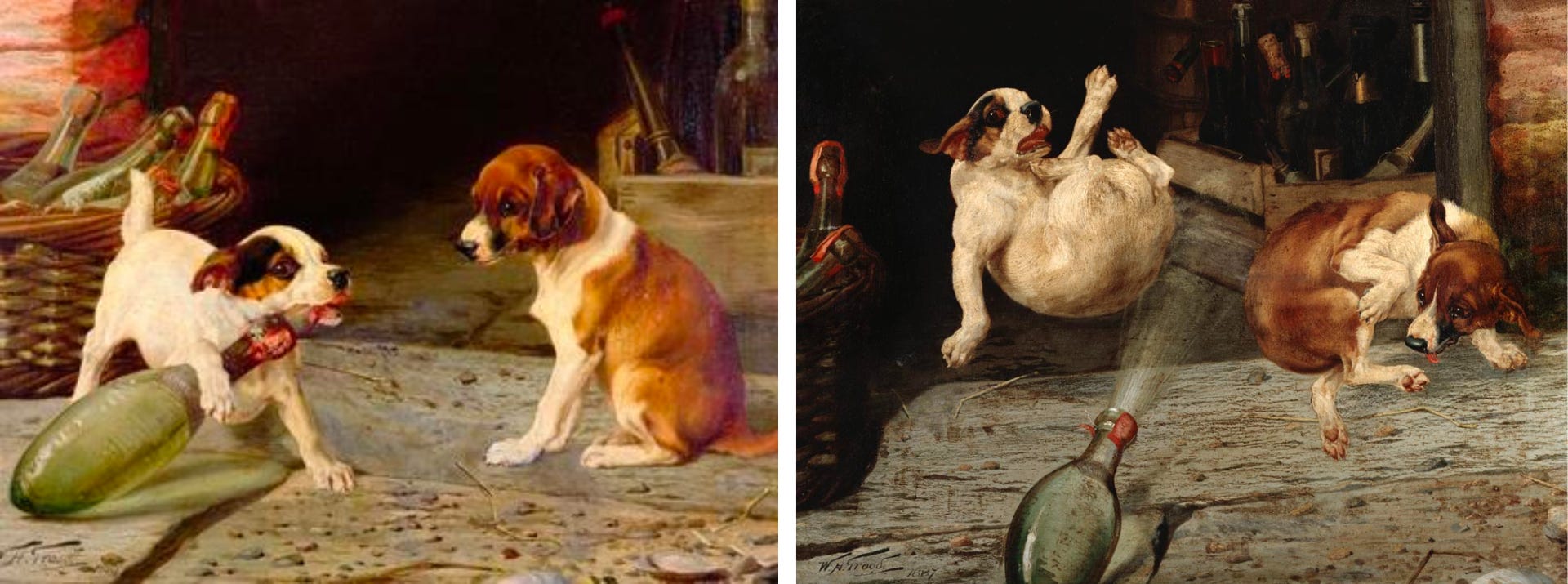I Dreamed a Dream.
It’s 2009. A 47 year-old Scottish woman walks on stage on Britain’s Got Talent. Everything about her says she’s there for comic relief, from her frumpy dress to her quirky personality. Simon Cowell rolls his eyes. The audience laughs when she says her dream is to be as successful as Elaine Paige.
That all changes when she begins to sing (skip if you know the story, or just re-watch it, it’s still great):
Here are the judges’ reactions:
“It was the biggest surprise I have had in three years on this show.”
“I know that everybody was against you. I honestly think we were all being cynical, and that was the biggest wake up call ever.”
The woman was Susan Boyle and that performance was both a feel-good moment and, yes, a cynical comment about human nature. But without those negative judgments that video never would have gone viral. Because there never would have been the element of surprise.
Subverting expectation is a powerful part of storytelling, possibly the most powerful. Every storyteller, and every startup, should learn how to inject surprise into their story.
If you like this post and are interested in pitching and founder storytelling, please subscribe to a Leap of Faith!
What science says about surprise.
Humans have been studying surprise for as long as long as unexpected things have been happening (a long time).

Brain chemistry may be one of the causes according to a recent article in Scientific American by S. Hussain Ather. An M.I.T. experiment discovered that production of the hormone noradrenaline spiked when mice received an unexpected stimulus. So reacting to surprise may literally be hardwired into our brains.
Unsurprisingly (I couldn’t resist), psychologists also have a lot to say about surprise and its effects. In “The Cognitive-Evolutionary Model of Surprise,” the authors Reisenzein, Horstmann and Schützwohl review the literature on surprise theory. Here are some of their insights.
The amount of surprise is proportionate to the level of unexpectedness. Let’s say you hit a button and a red candy comes out. Then one time a blue candy comes out. That’s surprising. If the next time you hit the button you fall into a tub of cold water, that’s really surprising.
Surprise interrupts thought processes and causes a shift of attention. Doing something surprising literally captures attention. First by interrupting whatever the person was doing, e.g. checking their Slack messages, then forcing them to pay attention to the surprising stimulus.
Finally, the result of this interruption + attention shift is an increased likelihood of remembering what was surprising. This sounds like something very useful.
Understanding expectations.
To subvert expectations you first have to know what those expectations are. The producers of Britain’s Got Talent knew exactly what they were doing when they invited Susan Boyle on stage.
How well do you know investors’ expectations?
The standard slides in a pitch deck are a pretty good guide to what investors are looking for. And as I’ve mentioned before, each slide has a hidden off-ramp where saying the wrong thing, or not not saying what’s expected, is a path to a quick no. You can avoid those early off-ramps by making sure your story hits on all the key points.
But doing only what’s expected of you is also a bad strategy. It’s playing for a tie. You won’t turn off an investor but you also won’t stand out. And you must stand out.
Investors are looking for the unusual. You could say they’re expecting the unexpected. That can be an unexpectedly great founder or traction that is surprisingly good, a novel scientific breakthrough, or some unanticipated change in the industry that has created an opportunity for you.
Without surprise the greed centers of the investor brain never get activated.
Where and how to use surprise.
Now that we’ve talked about how surprise works, let’s look at specific places where it can be effective.

Traction
There’s a rule in pitch decks that goes something like this: if you have great traction lead with it, otherwise sell the dream.
Not every great company has great early traction. But if you do, go ahead and emphasize it. This can be in the email blurb in your cold outreach email, your title page or your Traction slide (which can be the first slide).
But make sure your traction is not only great, but surprisingly great. A 10,000 person waitlist before you launch. $100K MRR within 6 months. A Fortune 500 client signed to a long-term contract.
Remember, to be surprising is to be unexpected. Having some early sales wins because you have a biz dev focused CEO is wonderful, but not unexpected. Having very high daily active use in spite of tons of bugs, non-existent customer service and a company with no history? That’s surprising.
Solution
Your solution, or the unique approach to solving the problem, is another place for the unexpected to appear. Think about it this way: if your solution is obvious then you really aren’t doing anything unique.
So few solution slides I see contain anything remotely surprising. They’re usually product slides listing (unsurprising) features. They explain what has been built not why it’s unique and exciting.
Here are some examples of surprising things you could put on a solution slide:
- we have a patent on this IP, we’re the only ones who can use this approach
- we took technology from an entirely unrelated field and applied it to the problem
- we have unique pricing or distribution that’s never been done and will be disruptive
- we added something new to an existing platform and it took off in unexpected ways
One way to gauge the surprise factor in your solution slide is this sentence structure:
We thought the solution was going to be X, but we were surprised that it was actually Y.
That makes innovation (Y) so much more interesting.
Why Now
By definition, answering this question means something is new, something has changed in the industry/technology/competition that creates an opportunity. If it’s an unexpected change, like COVID-19, it can be the surprise that makes your pitch memorable.
Competition
Your solution and competition are two sides to the same coin. So exploit whatever is surprising about your solution by using it to differentiate yourself from competitors. Your unique solution should create a surprisingly big competitive gap that you fill.
Team
Early stage founding teams rarely tick all the boxes. So what? If this is your first startup talk about an achievement or experience outside of the company that’s surprising. Like moving back to your parent’s house during COVID and helping them out with their restaurant, which made you start this company. Have an astrophysicist in your sentiment analysis startup? Talk about how innovative it is to bring physics to marketing.
Where surprise is less effective.
There are some slides in a pitch deck that fall under the category of “no surprise is a good surprise.”
For example, Product, Market, GTM, Business model, Financials, Ask. I’m not saying there’s no room for delightful surprises on those slides. But for the most part, they follow logically from innovative things you’ve done on your Solution slide, for example.
Take the Product slide. You might have gorgeous screenshots or a hardware prototype people can touch and feel. All of that is impressive but is it truly surprising? Beautiful traction beats a beautiful product.
The Problem slide can also contain surprises, but not if your goal is to make the investor feel a problem they already empathize with.
Avoid gimmicks.
Before you go out and make your slide deck bright yellow, which I’ve already done by the way, keep in mind that gimmicks are not good surprises.
I remember one founder who opened his pitch by rapping. He was good at it, but it didn’t help his pitch.
I live by a personal creed that says all animations and slide transitions are bad surprises.
Big bold type can work (see my Goodlawyer makeover) but only if what you’re saying is truly surprising. Saying “DIGITAL ADVERTISING IS BROKEN” is not surprising. Saying “POSTCARDS STILL WORK” is surprising.
Good design can help deliver surprise and force investors to pay attention to something important. I wish more people would think creatively about their design, especially to communicate something unexpected. Slick design should not be a goal. Memorable design should be.
Using the element of surprise.
To be innovative is to be novel, to be new and unusual. If you surprise an audience with your story you’ll have reactions like this:
“Wow, I had no idea that was true.”
“I can’t believe you did that.”
“I thought the opposite but you just proved me wrong.”
In your entire pitch deck you might only have one or two true surprises. That’s more than enough to make a lasting impression. Avoid cheap gimmicks and find something that is both true and unanticipated.
The most important thing to remember is that you can’t just say something surprising. You have to back it up with real substance.
No one would have remembered Susan Boyle if she couldn’t sing.



